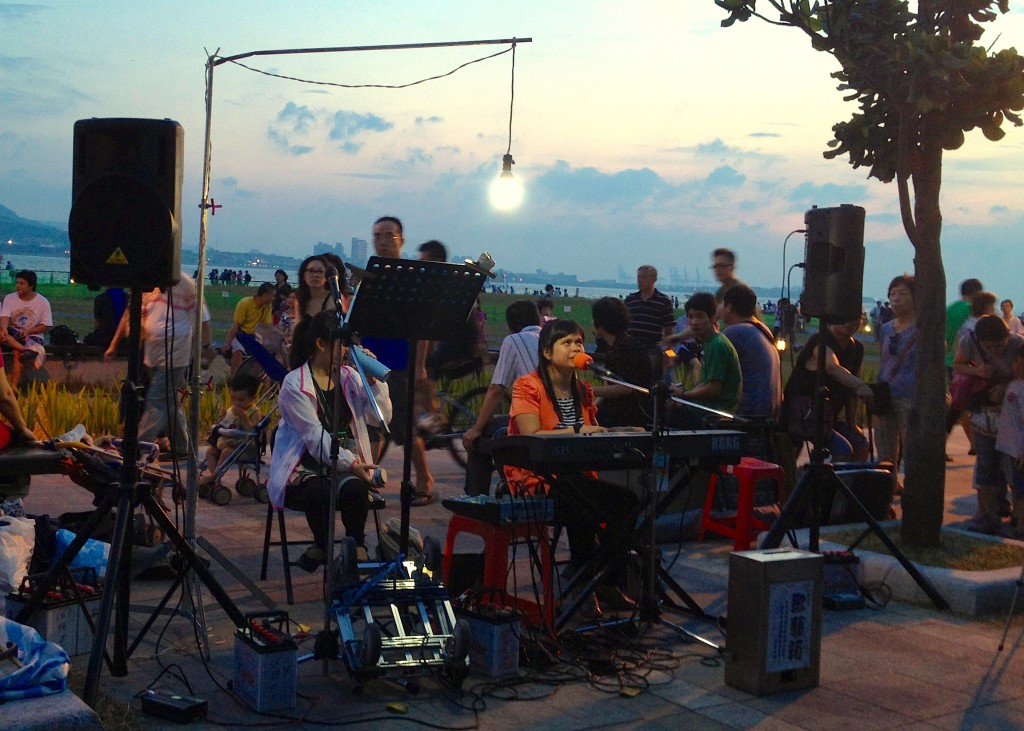
My current project is an ethnography of nakashi, a street-based performance style that emerged in Taiwan during the Japanese Occupation era in the 1930s. I explore the sound and meaning of nakashi in the context of low-resource technology, mobility, disability, and street market economy.
Since 2009, I have been doing archival and internet research, and performing songs from this repertoire in my band Dzian!. Summer of 2013, I began taking my research into the ethnographic register — interviewing, field recording, media-hunting, audio and visual analysis, and eventually co-creating music with the remaining nakashi musicians in the streets of Taipei and Taoyuan. My most recent fieldwork is documented as a multimediated narrative. On this blog, I post semi-regularly about the meaning of nakashi within its social, mediated and technological contexts.
Most of the living musicians associated with the tradition have congregated in the north of the Taipei City near Beitou and Danshui, since the golden era of nakashi in Taiwan in the 1970s and 1980s. But nakashi, both as a cultural practice and a trope, has extended beyond the vicinity of Taipei.
While in Taipei, I experimented with integrating GPS and GIS into my day-to-day fieldwork activities. With a smart phone, I sent latitude-longitude coordinates of the nakashi street performances that I encountered. I used Google Fusion Tables to create a mockup map of these these ad-hoc street performances. Eventually, I intend to create a custom map with historical overlays related to colonial and postcolonial cityscape. Using these emerging technologies, I’m working to create a set of richly textured narratives about the postcolonial urban soundscapes of Taipei.
This project pays special attention to Taiwan’s street-level soundscapes. I went around Taipei (including the New Taipei County) with my audio recorder looking for sounds of Taiwan’s nakashi street culture in the summer of 2012. I encountered a number of musicians busking and Taiwanese opera (koaxi) troupes performing in public spaces. I also come across sounds representative of the Taipei urban soundscape such as loudspeakers and old-school pinball machines. This set of field recordings is not meant to be a comprehensive bank of Nakashi sounds. Through listening, discovering, recording and compiling, I see this collection as a reflection of the process of my exploration of present and past meanings of Nakashi in Taiwan.
[soundcloud url=”http://api.soundcloud.com/playlists/2761683″ params=”” width=” 100%” height=”335″ iframe=”true” /]
Another mode of inquiry is through my arranging and performing efforts with my new band Bitter Party. In this band, I arrange and compose songs based on source materials from 20th century Taiwan and fully embrace the technological intervention in this repertory. I sample acoustic instruments like sanshin, ghostly riffs from analog recordings that I have discovered from my nakashi research, and borrow from the whimsical MIDI song arranging techniques from nakashi musicians and their cassette/vinyl recordings. Read and Listen.


 bio
bio